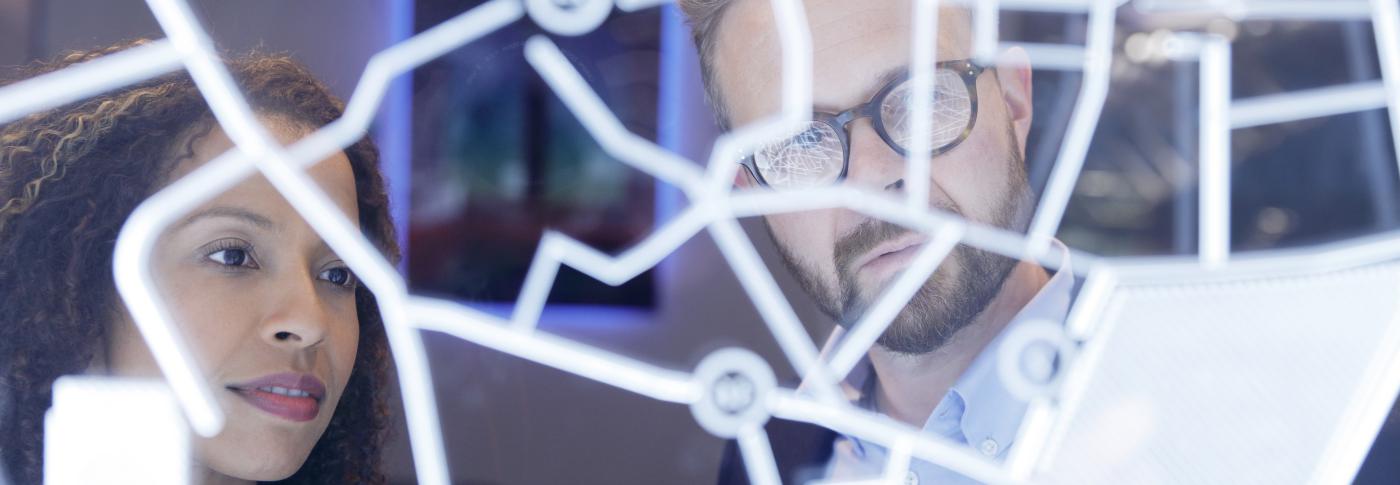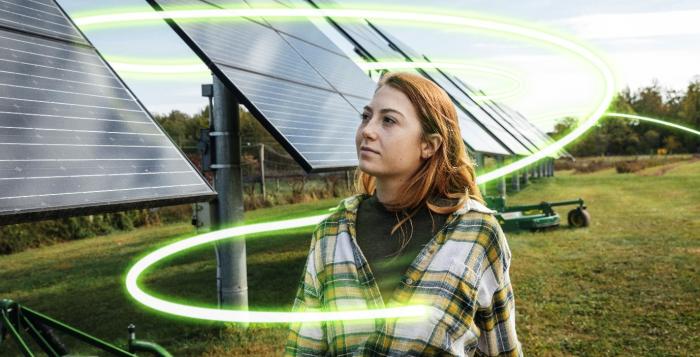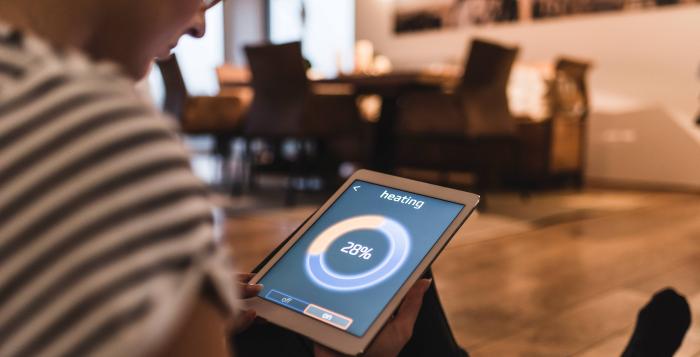This programme was established to develop the balancing capabilities that the Electricity National Control Centre needs to deliver reliable and secure system operation, facilitate competition everywhere and meet our ambition for net-zero carbon operability. To date, the programme has done extensive work to modify our existing capabilities to meet changing market conditions and customer requirements.
However, in their current form, our existing capabilities will not be able to meet all future challenges. Additional investment is required to develop new capabilities that can meet changing requirements. We are modernising and transforming our balancing capabilities and associated platforms. This will ensure that we have the vital flexibility to facilitate future changes, both expected and emerging, across the industry.
In line with our RIIO-2 plan, we have assessed what is required to transform our systems whilst maintaining our existing systems and enabling market changes to continue. We now have a better understanding of the complexity of change required and the large number of dependencies involved in transitioning from old to new systems.
Following a strategic review we held in spring 2022, we committed to engage with our stakeholders quarterly, providing updates on what we have been delivering and how we plan to transform the balancing capabilities of the control room.
Through these engagements we have taken on feedback that more detailed conversations with stakeholders are required around certain topics. We have therefore established stakeholder groups to collaborate on topics more regularly.

Ongoing engagement
Find all the latest updates from our in-person workshops.
As agreed through our strategic review with industry between April and June 2022, we will provide regular updates on our website and look to host in person events every quarter to keep our stakeholders informed of our progress.
Theses updates will focus on how we are working towards delivering our co-created roadmap, ensuring we are transparent with the costs, risks and benefits associated with our delivery plan. The in-person workshops offer a great space for collaborating with our stakeholders, ensuring we continue to gain valuable insight and feedback from across the industry into what we are delivering.
You can view our latest PI Closure report below which details how we are progressing against our plan.
March 2024 workshop
On 27 March we hosted a Balancing Programme webinar where we provided an update to industry on progress to develop our control room balancing capabilities.
We presented an overview of deliverables since our last engagement event for both current systems and the Open Balancing Platform (OBP), and outlined the impact and benefit of these to the market. Details of future system releases were also provided, with a particular focus on fast dispatch, and the functionality this delivers to the control room. Changes made to the OBP delivery roadmap were highlighted to stakeholders, and an explanation as to the reason for these changes provided.
A series of polls were run during the session regarding the location of future in-person events and topics for discussion, and future engagement opportunities throughout 2024 were highlighted to stakeholders. The webinar concluded with an interactive Q&A session.
| Download the workshop slides | Watch the webinar |
November 2023 workshop
We recently hosted our fourth Balancing Programme engagement event, where we confirmed the launch of the Open Balancing Platform (OBP) which will go live on 12 December and is the foundation to start replacing current balancing systems.
We provided details about the OBP Release plan, the optimisation logic that’s sits behind the Bulk Dispatch Optimiser, the latest demo which shows the OBP system in operation and our approach to transitioning from current balancing systems to OBP. We also provided an overview of our delivery roadmap across our portfolio of balancing systems.
| Download the workshop slides | Watch the follow-up webinar | Watch the PI9 demo | Watch the OBP demo |
June 2023 Workshop
In our latest workshop with industry stakeholders, we showed the benefits and value of what we have been delivering as a programme. Following this we had a choice of four different break out sessions for stakeholders to attend, exploring the topics below:
- Open Balancing Platform demo
- Stakeholder groups
- Balancing trials
- Dispatching wind
We then looked at how what we are delivering in the programme is contributing to our 2035 net-zero operability ambitions. The session finished with a Q&A panel with our speakers from throughout the day.
| Download the workshop slides | Watch the webinar |
February 2023 workshop
In February we welcomed stakeholders to our latest workshop in London. The day started with updates on the progress the team has made in delivering the co-created roadmap, showing how improvements being made in existing systems are helping bring in new services, as well delivering benefits to dispatch efficiency for control room engineers.
The afternoon session looked to collaborate with stakeholders, seeking their feedback and insight into the key future deliverables of the team. Topics included the latest demo of the new Open Balancing Platform that is due to be deployed this year, as well as open discussions on the future dispatch optimiser and how we could improve energy forecasting.
| Download the workshop slides | Watch the webinar |
October 2022 workshop
In October we held our first Balancing Programme quarterly update at our offices in Wokingham. We gave stakeholders a recap of the strategic review we ran earlier in the year, before providing updates on how we are working towards delivering the co-created roadmap.
In the afternoon we held a breakout session, with several stalls focusing on the different areas of the programme and across the ESO. The video shows our facilitator talking through how the day worked with one of our stakeholders who attended the event, gaining valuable insight into how they thought the day went.
| Download the workshop slides | Watch the webinar |
Following feedback from stakeholders, we have established stakeholder groups to ensure we work collaboratively and align internal balancing enhancements with industry expectations.
We have set up these groups to allow for more focussed discussions on a variety of topic areas. These include:
- Optimisation - A group to share details of the new algorithms we are creating and to proactively seek examples from Industry that they would like us to test and explain. This is to supplement material we will be publishing online allowing interested parties to explore the details of the logic in greater detail
- IT Technology - Looking at ways to develop future technical roadmaps and to facilitate testing as we deliver new functionality. As we develop new solutions, we are aware that a number of software developers would like to test out new methods of exchanging data with the ESO before we go into production. We’d also like your ideas on how new emerging technologies could improve communications and we’d like to develop shared roadmaps where these are appropriate.
- Forecasting - The group's primary focus will be on enhancing the forecasting capability for zero-carbon energy operations, by improving the transparency and accessibility of energy data and exploring innovative forecasting methods using new data and modelling techniques. The group will collaborate with industry stakeholders to align internal forecasting enhancements with their expectations, addressing their pain points and planning for future improvements.
- Storage – A group to collaboratively work with industry to develop new capabilities that address some of the challenges currently faced by Storage providers. The group will help us to prioritise capabilities that provide the greatest benefit.
To join one or more of these groups, register here.
All information regarding the group and the materials from the meetings can be found on the respective tabs:
Storage group
| Name | Published Sort ascending |
|---|---|
| Storage stakeholder forum - 20 July 2023 | 16 Aug 2023 |
| Storage stakeholder group terms of reference | 14 Jul 2023 |
| Storage stakeholder forum - 12 May 2023 | 14 Jul 2023 |
| Name | Published |
|---|---|
| Optimisation stakeholder focus group meeting webinar | 28 Feb 2024 |
| Optimisation stakeholder focus group meeting slides | 28 Feb 2024 |
| Optimisation stakeholder forum | 5 Jun 2023 |
| Optimisation stakeholder group mural output 5/6/23 | 5 Jun 2023 |
| Optimisation stakeholder group terms of reference | 5 Jun 2023 |
Forecasting group
| Name | Published Sort ascending |
|---|---|
| Forecasting working group - November 23 | 8 Nov 2023 |
| Forecasting working group ToR | 14 Jul 2023 |
| Forecasting working group - May 23 | 14 Jul 2023 |
Technology
April 2024 technology stakeholder focus group

Strategic capability review
Read the details of our strategic capability review which was held between April and June 2022. It was undertaken to help us ensure that we meet our RIIO-2 objectives, minimise balancing costs, deliver consumer benefits and create a foundation for future market changes and reform.
Powerloop: trialling vehicle to grid technology
In 2022 we collaborated with the Octopus Energy Group on a trial to understand the viability of domestic EVs playing a role in our energy balancing activities through vehicle to grid (V2G) technology. The trial was the first of its kind for the British energy system, linking actions in our Electricity National Control Centre to end consumer’s EV charge points.
It explored how altering charging and discharging schedules of individual households could offer us a greener, cheaper way to balance the energy system, while protecting customers’ preferences. The trial was a proof-of-concept piece with two high level objectives:
- Understand the viability of entry into the Balancing Mechanism (BM): Looking at the aspects of the BM framework and obligations that currently act as a barrier for V2G enabled EVs to enter this market
- Demonstrate the capabilities of V2G enabled EVs: Proving the capabilities of V2G enabled EVs when working in a BM framework, gathering insights into their ability to respond to instructions and the commercial viability of an asset of this type when compared against the current market
Although the trial centred on V2G enabled EVs, the findings and conclusions drawn from the report are applicable to all types of EV smart charging, as well as offering a good insight into other flexible domestic assets.
Below is the technical report covering all aspects of the trial. Alongside this there is a short animation explaining how domestic EVs could play a role in balancing the energy system of the future.
If you have any questions regarding the report and trial, please contact us via email here [email protected].
Sign up to receive the latest updates from the programme, including details of our quarterly workshops.
Find a full list of all questions and answers from our Balancing Programme Events.
Email us if you have any queries.




